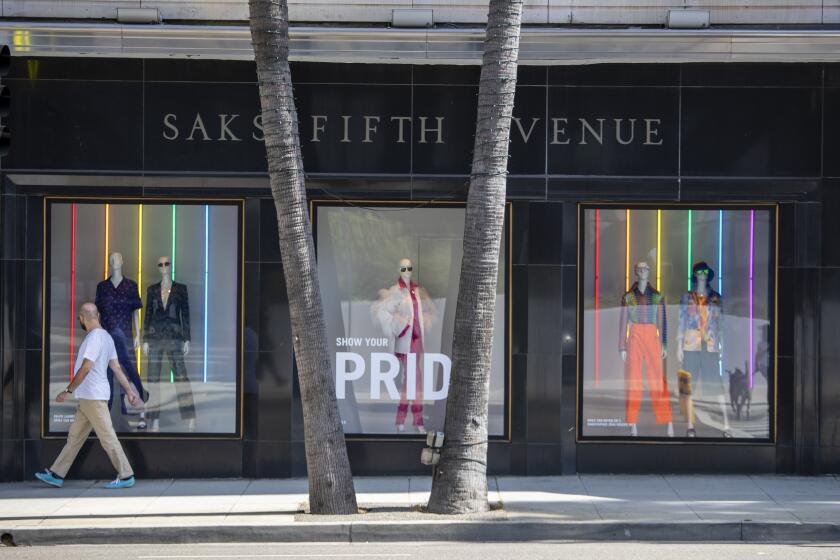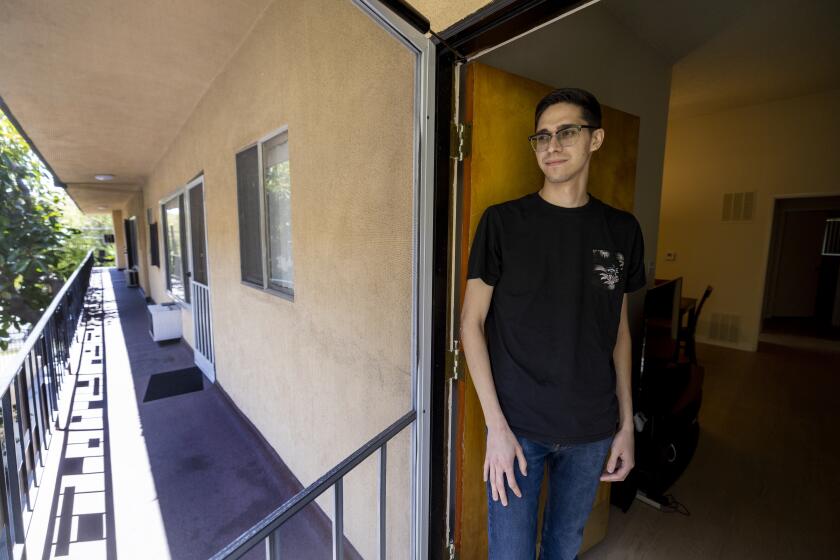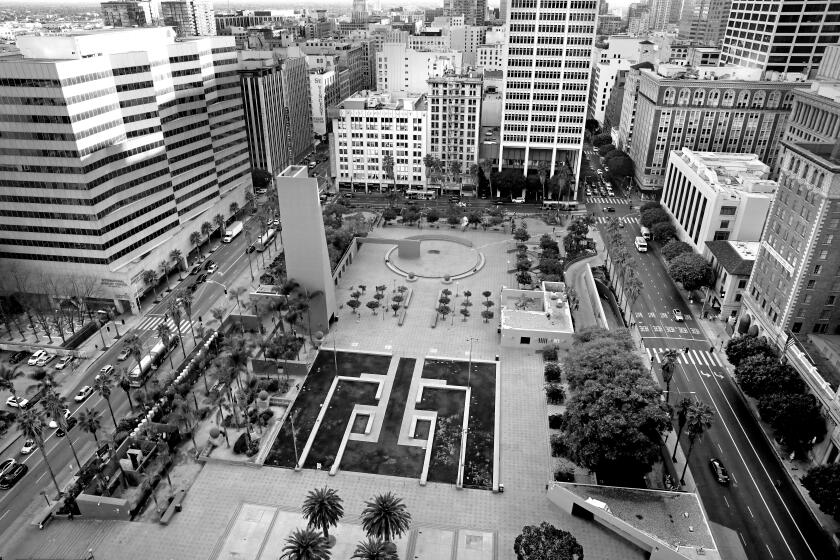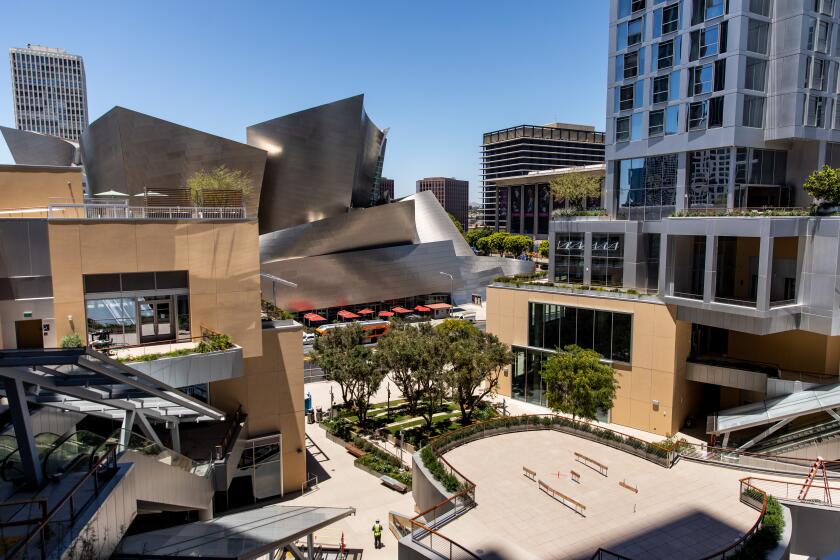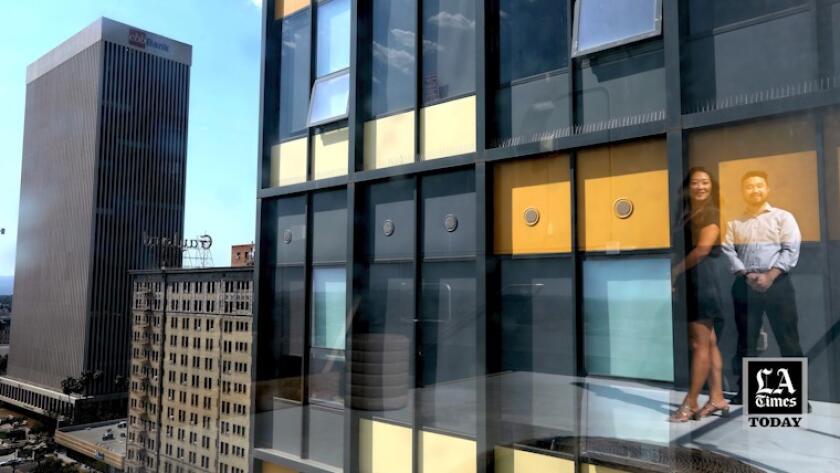Goodbye, water cooler; hello, pool: More Los Angeles offices are becoming apartments
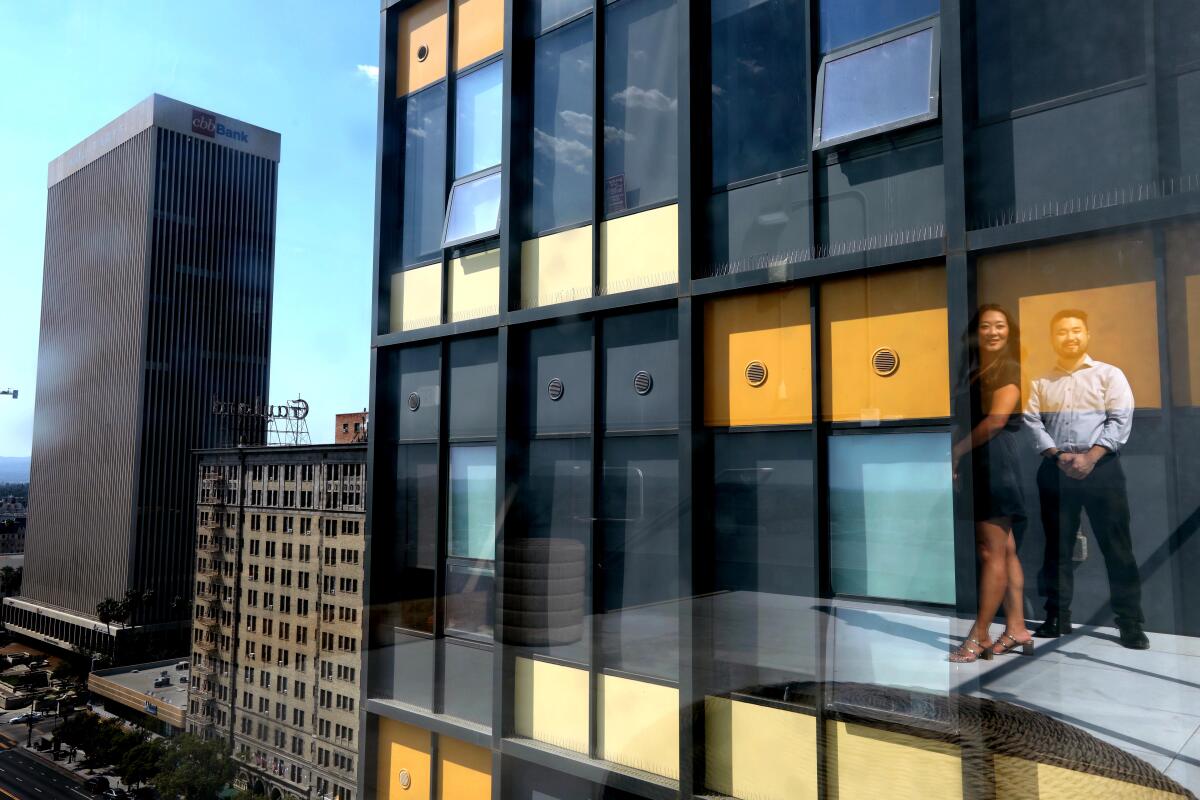
- Share via
Texaco never did things on a small scale.
So when the Texas oil giant needed a Western headquarters in the 1950s, it turned to prominent architect Welton Becket, who designed L.A. landmarks including Hollywood’s Capitol Records building and downtown’s Dorothy Chandler Pavilion.
Becket created a grand high-rise shaped like a T (when viewed from the sky) for a spot on Wilshire Boulevard, Los Angeles’ storied thoroughfare. It rose next door to what was then the Ambassador Hotel, one of the city’s most exclusive inns, where celebrities cavorted at its legendary Cocoanut Grove nightclub.
It’s hard to imagine what office toilers from the “Mad Men” era would think of the place today.
Known as the Crosby, the building has amenities such as a rooftop swimming pool with cabanas, fitness center, fire pits and a karaoke room. Monthly rents start around $2,250 and hit $6,500 for a penthouse.
The former Texaco high-rise is part of a national push to convert aging office buildings to residential use as demand for housing surpasses the need for offices in many locations.
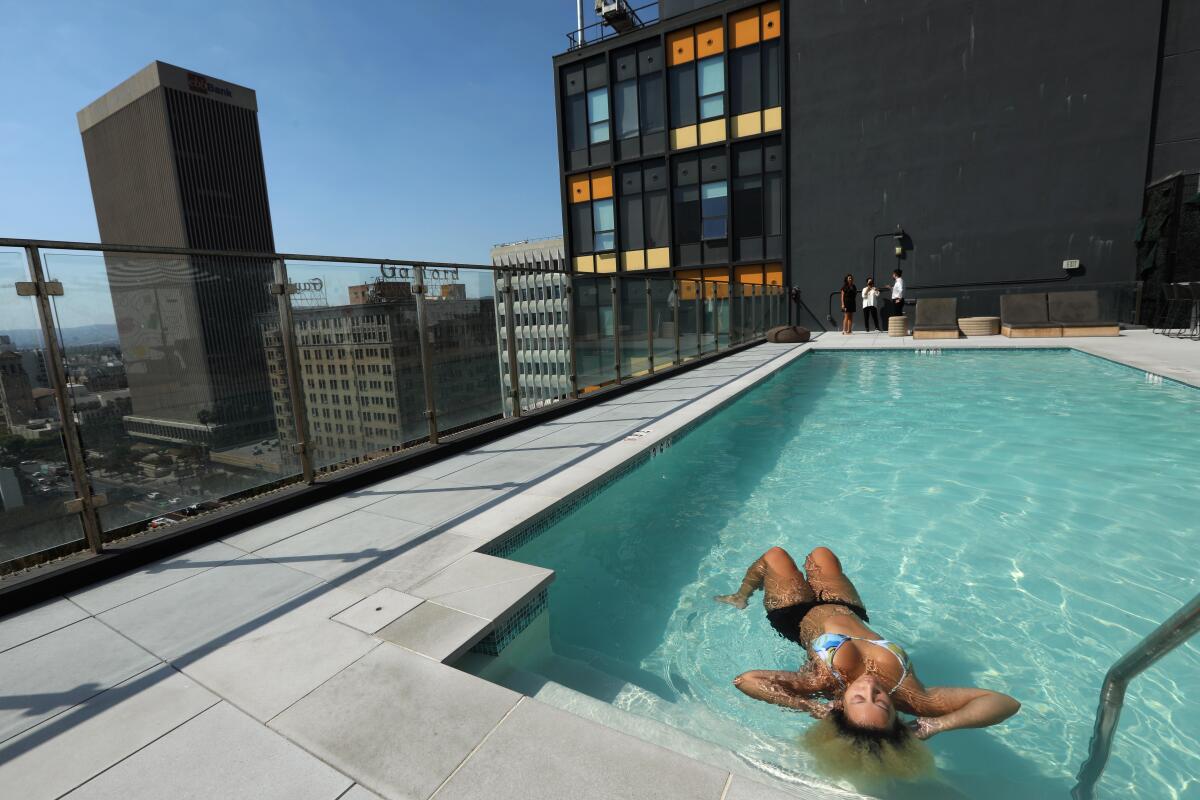
Turning old office buildings into apartments or condos is hardly new. But as companies permanently adapt to remote work, expectations for cutbacks in office rentals have spurred new interest among landlords in switching the uses of their buildings in the years ahead.
Most haven’t acted yet because overall demand for office space as COVID-19 wanes is yet to be established, but candidates for conversion are thick on the ground.
Think tank Rand Corp. identified in a March study 2,300 underutilized office and hotel properties in Los Angeles County that could be converted to housing. Most of them are older office buildings with big chunks of unrented space.
If all the underused buildings were converted to housing it would add as many as 113,000 units, Rand said, about 9% to 14% of the housing Los Angeles County needs to produce over the next eight years to meet demand.
Saks Fifth Avenue, one of Beverly Hills’ most famous department stores, is set to move to make way for a mixed-use complex that could energize a sedate stretch of Wilshire Boulevard near Rodeo Drive.
Some neighborhoods such as downtown L.A. and Koreatown, where the Crosby stands, have concentrations of tall, aging office towers suitable for housing but many other candidates are less obvious, architect Karin Liljegren said.
She specializes in conversions and is bedeviled by what she sees driving around L.A.
“There are opportunities everywhere,” Liljegren said, such as small office buildings on less-traveled streets. “It’s just that people don’t have the vision.”
Among those who’ve taken on conversions at a large scale are Jaime and Garrett Lee, two leaders of the Jamison real estate empire founded by their father, David Lee. The elder Lee is an internist and immigrant from South Korea who bought up struggling office high-rises in Koreatown after the 1992 Los Angeles civil uprising depressed their values.
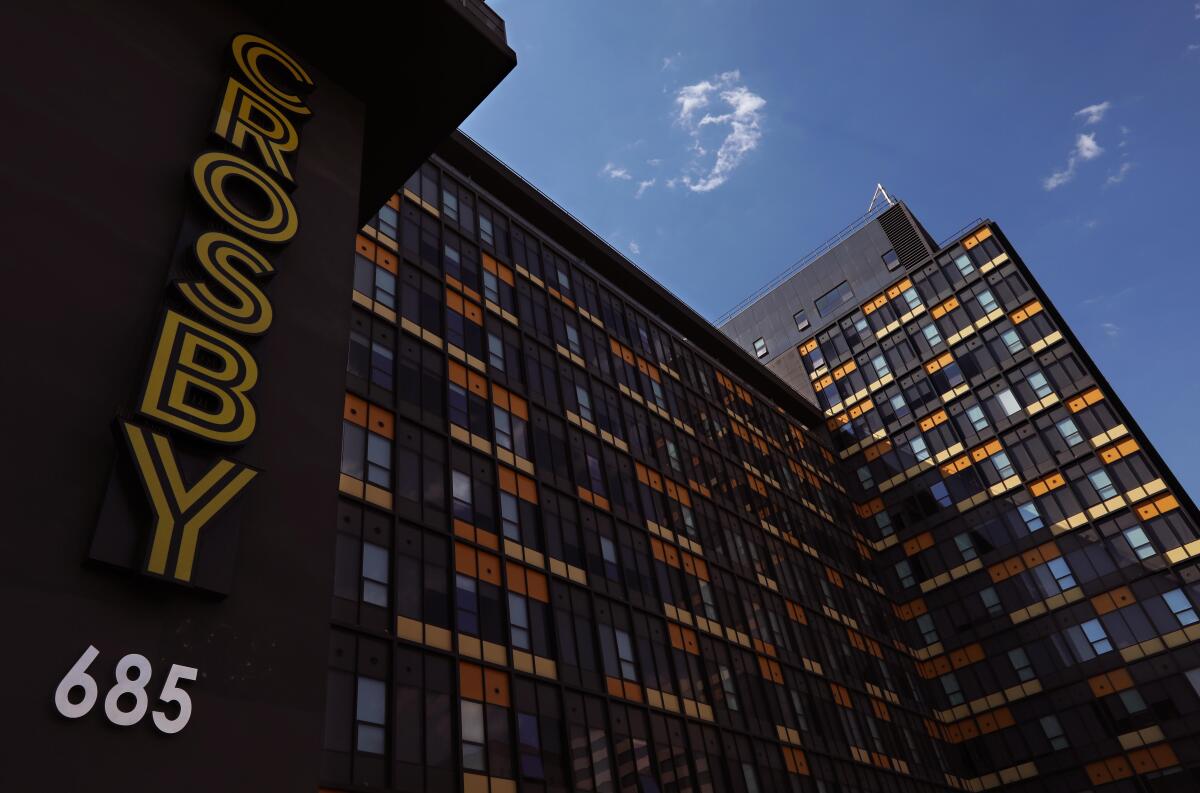
He went on to acquire many other large commercial buildings in the Los Angeles area and became one of the region’s largest commercial landlords, later expanding into developing new residential projects including the luxury Circa apartments downtown and Kurve on Wilshire near Koreatown.
In 2013, Jamison took a chance on converting the use of one of its office towers, the former headquarters of U.S. Borax on Wilshire Boulevard dating to 1963. Citing rising crime as one of the reasons, Borax left for Valencia in the early 1990s and the building was not much of a draw for business renters in the years that followed.
It was, however, also designed by Welton Becket and located across the boulevard from the Art Deco landmark Bullocks Wilshire department store building now occupied by Southwestern Law School. Jamison turned the former Borax building into 127 apartments.
“Much to our surprise,” Jaime Lee said, “we leased them all in three months.”
The Westmore, as the Borax building is now known, was quickly rented to law students, young professionals and some retirees, Jaime Lee said. “We thought we were on to something.”
The number of apartments available for rent in L.A. County is the lowest it’s been in two decades. The booming job market isn’t helping.
Jamison had the advantage of owning buildings in a part of the city that was economically recovering due in large part to the expansion of Korean American businesses and residents who had adopted a central swath of the city left behind by corporate decision makers and longtime white residents.
Offices in the Wilshire neighborhood fell out of favor with the city’s business leaders in the latter decades of the 20th century as many decamped to fresher buildings in other parts of the city. Texaco, later absorbed by Chevron Corp., announced in 1985 that it would sell the property and move to a new skyscraper in Universal City.
By 2013, the area’s diversity was drawing favorable attention from a younger crowd not burdened by unsavory impressions of its past. A television feature about local cuisine by popular chef Anthony Bourdain that year helped cement the neighborhood’s reputation as a happening place, Jaime Lee said.
“Koreatown became a thing,” she said. And, “a creative, vibrant neighborhood requires more housing.”
So far, Jamison has converted seven office buildings to residential use with a combined total of more than 1,200 units, nearly all of which are leased. More makeovers are in the works.
“We’re maybe halfway through” converting adaptable Jamison buildings, Jaime Lee said.
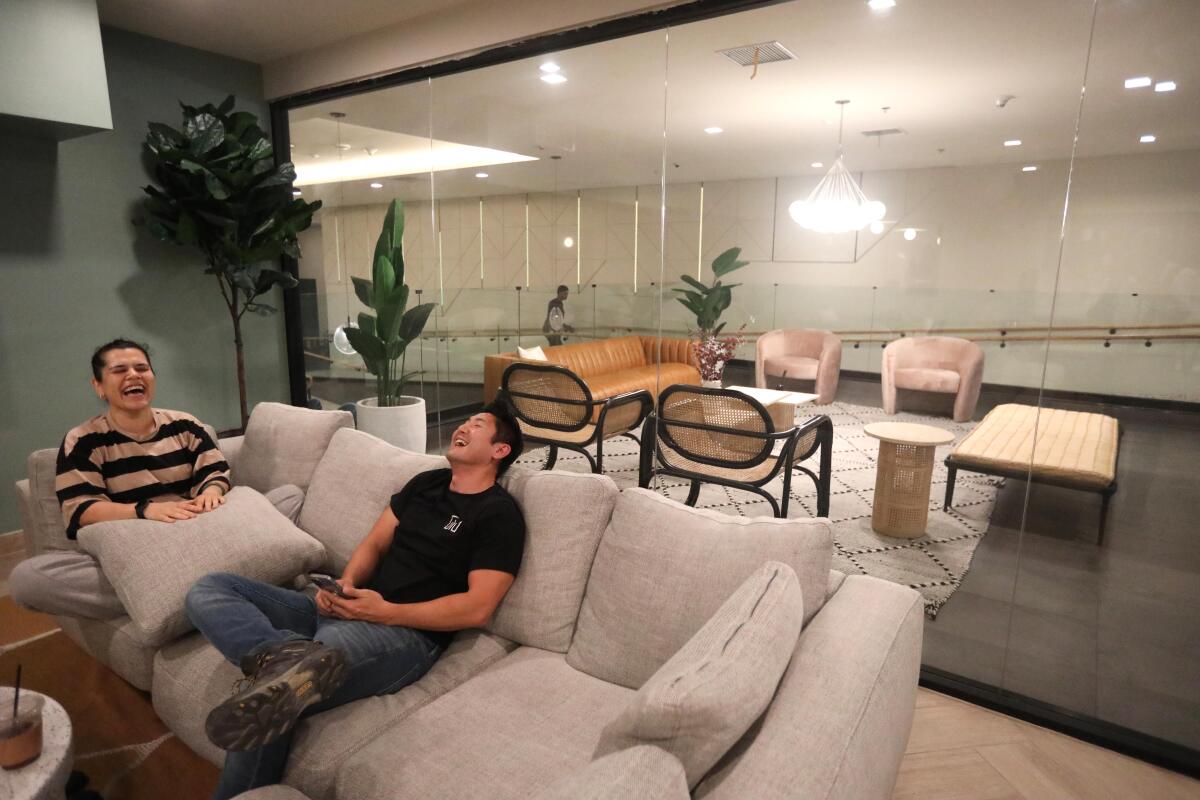
Although it can cost millions of dollars to convert a high-rise office to apartments, it’s cheaper than erecting a new building from the ground up. Former office buildings also tend to come with ample parking and other large spaces that can be put to new uses.
Office buildings are typically heated and cooled with big underground boilers and chillers, Garrett Lee said. By moving the climate control machinery and engineering offices to the roof as is common in residential buildings, more space becomes available for other uses. Jamison has dropped in gyms, golf simulators, basketball courts, dance studios and karaoke rooms.
Jamison has found room in former offices to add co-working spaces, community rooms for recreation and good-sized theaters. There are rooftop decks and swimming pools, along with putting greens and dog-washing stations.
The company will keep converting offices to apartments as market demands dictate, Jaime Lee said, but Jamison is still banking on the office rental market to rally.
“We still have high hopes that a large contingent of office workers are coming back at some point,” she said. “We’re not giving up on that.”
Work from home is what many employees want. But employers still want you back in the office
Liljegren, founder of architecture firm Omgivning, is more skeptical about office landlords’ prospects as businesses adapt to remote work.
“Vacancy is only going up,” she said. “We’re just beginning to see it.”
One thing real estate industry observers agree on is that many businesses are taking advantage of the soft office rental market to move to newer or nicer quarters. Much of the empty space they are leaving behind is in older buildings that may end up being best used as housing.
L.A. first saw a wave of conversions two decades ago when the city passed an adaptive reuse ordinance in 1999 that made it easier under city codes to change offices into housing or hotels. The result was about 15,000 housing units, Liljegren said. “It’s been highly successful.”
That ordinance focused on century-old buildings in downtown’s historic core, but a new community plan close to adoption known as DTLA 2040 would make it easier to build housing downtown, including property conversions. In June, state officials set aside $400 million to offer developers incentives to convert offices to affordable housing over the next two years.
Such actions are setting the table for a surge of conversions, Liljegren said.
“Now we’re coming out of COVID and we’re seeing so much less demand for commercial spaces at the same time there has already been progress in the works in terms of policy and funding.”
Architect Frank Gehry’s latest project opens in downtown Los Angeles.
Converting an existing building to a new use is more environmentally sustainable than building a new one, but the price of acquiring office buildings can be a barrier to conversion, Rand said. In neighborhoods with high property values such as West Los Angeles, it’s difficult for housing developers to afford to buy an office building, pay to convert it to housing and then collect high enough rents to turn a profit.
Downtown Los Angeles, the city’s oldest office market, presents more opportunities. Nearly a third of the 37,000 new housing units created since downtown’s residential renaissance kicked off in 2000 were created through adaptive reuse of mostly old office buildings.
“Adaptive reuse reshaped downtown,” said Nick Griffin, executive director of the Los Angeles Downtown Center Business Improvement District.
The arrival of thousands of residents changed the character of downtown L.A., which existed in the latter 20th century primarily as a 9-to-5 office district with scarce nightlife, few noteworthy restaurants and no grocery stores.
Since the pandemic began, downtown’s population dynamic has shifted again. Occupancy in downtown’s residential buildings has held steady and even grown as new units came to market, but the big office towers built to serve white-collar businesses have remained stubbornly underpopulated.
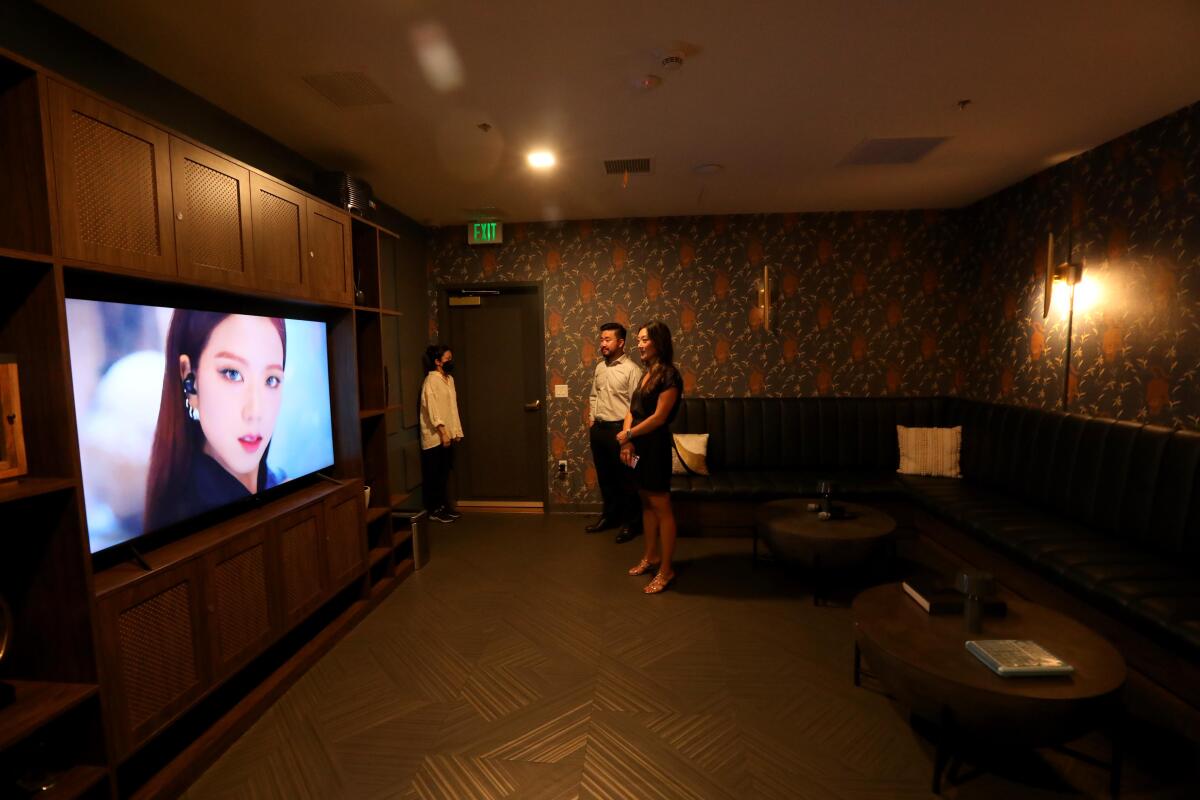
The disappearance of hundreds of thousands of daily office workers has been a blow to restaurants and other businesses that cater to them. The average Los Angeles office population is hovering at about 43% of what it was before COVID-19, according to Kastle Systems, which provides key-card entry systems used by many companies and tracks patterns of workers’ card swipes.
The sustained drop in the number of people coming into the office in favor of working remotely has led to speculation that companies will rent less space in the future, driving more office landlords to sell or convert their buildings to housing. Many landlords such as the Lees hold out hope that the great return to the office, however delayed, is still coming — even if remote work remains part of the plan.
If more office buildings are converted to residential use, it wouldn’t be a bad thing for downtown, Griffin said. A higher ratio of residents and the activity they bring could make remaining offices more desirable if downtown’s financial core comes to feel more like a neighborhood with energy and active street life.
Building owners will do what they need to do to make money, he said.
“Keep in mind that office districts like downtown center have a long history of evolving with the times and the market, Griffin said. “If you see a shortage of housing and a surplus of office, opportunities to bring those markets into balance will be seized.”
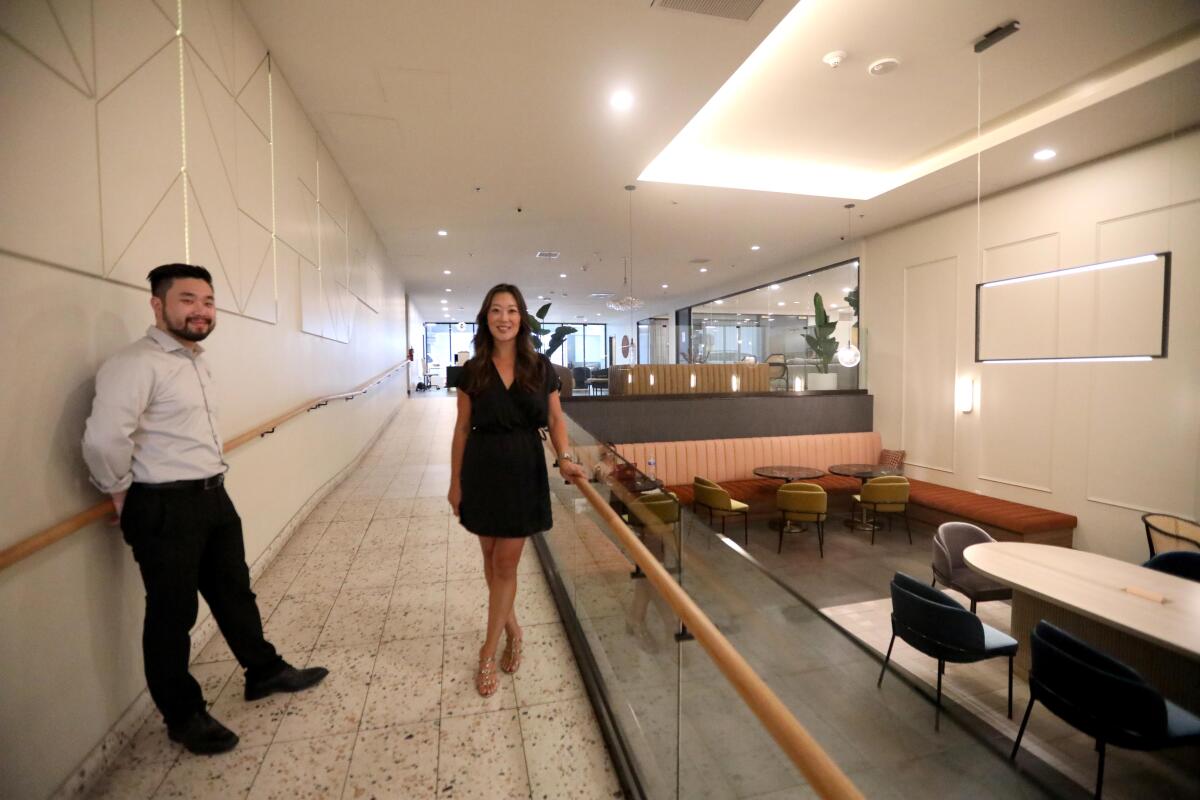
Even though thousands of apartments have been added in recent years, downtown’s units are consistently about 95% occupied and many more can be added without oversaturating the market, he said.
The Los Angeles area is “vastly undersupplied” with housing, he said, and there are few areas outside of downtown where developers can build on a large scale.
“That dynamic is not shifting anytime soon,” he said. “It would be hard to overbuild downtown given those factors.”
- Share via
Watch L.A. Times Today at 7 p.m. on Spectrum News 1 on Channel 1 or live stream on the Spectrum News App. Palos Verdes Peninsula and Orange County viewers can watch on Cox Systems on channel 99.
More to Read
Inside the business of entertainment
The Wide Shot brings you news, analysis and insights on everything from streaming wars to production — and what it all means for the future.
You may occasionally receive promotional content from the Los Angeles Times.
